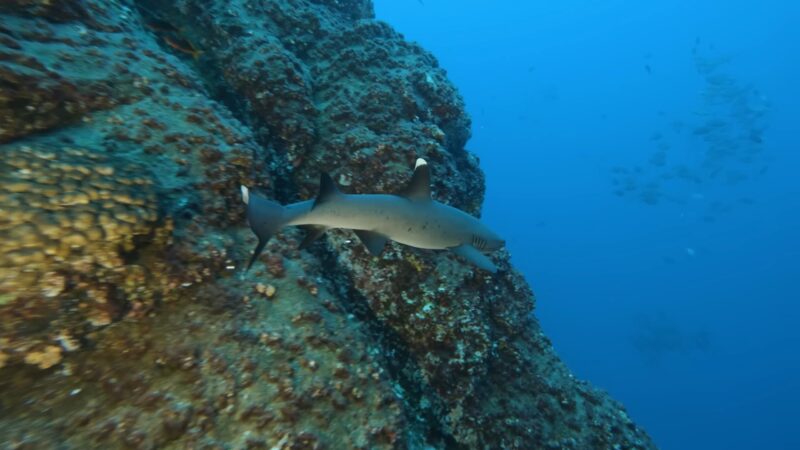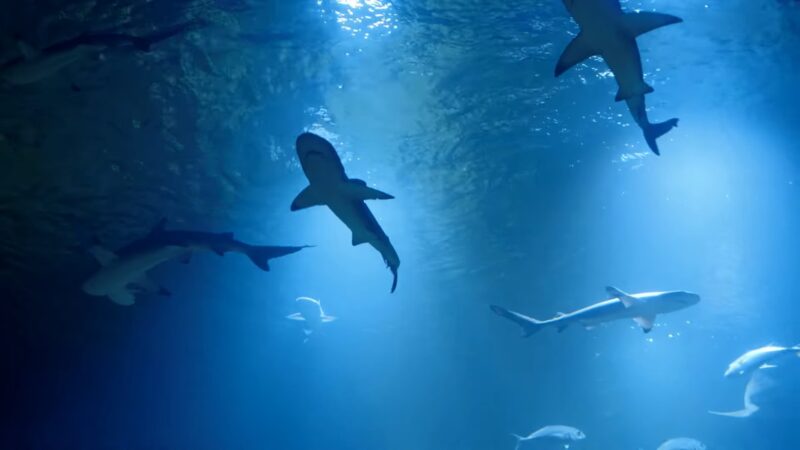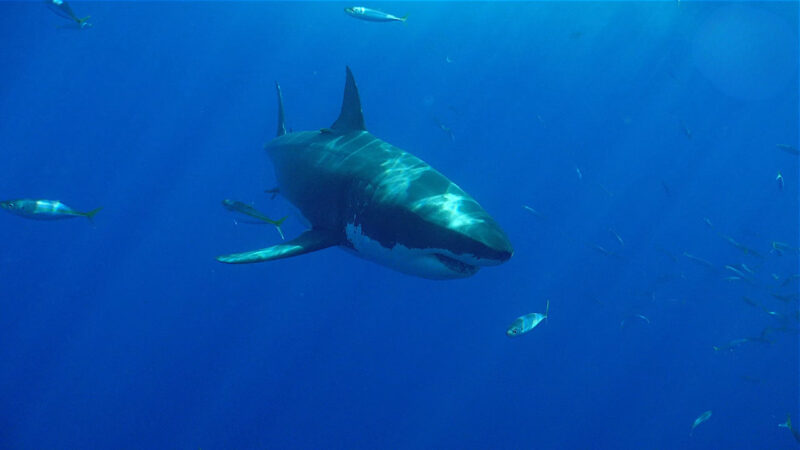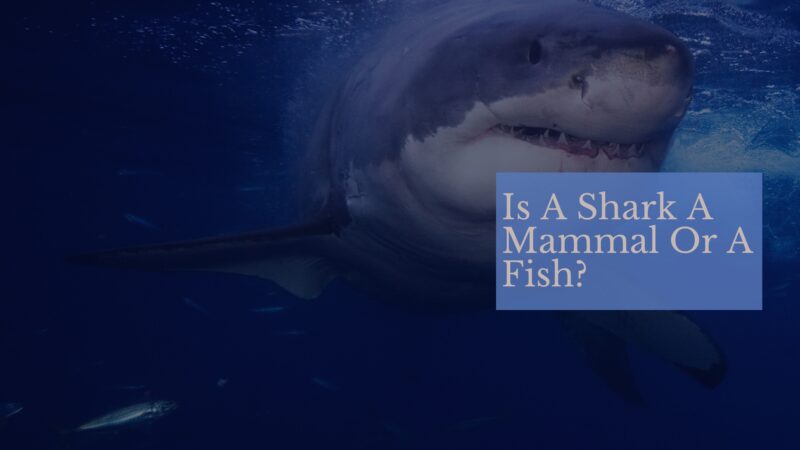If you’re anything like me, you’ve spent countless hours mesmerized by the captivating world beneath the waves, where creatures of all shapes and sizes call home. But there’s one resident of the deep blue that has always held a special place in my heart – the shark.
These toothy, fearsome creatures that make us think twice about dipping our toes in the ocean? But let me tell you, there’s so much more to these magnificent creatures than meets the eye.
I remember the first time I saw one. I was just a kid, snorkeling off the coast of Florida. Suddenly, a nurse shark glided by, its sleek body cutting through the water with an elegance that left me in awe. From that moment, I was hooked. Sharks weren’t the monsters I’d seen in movies. They were beautiful, powerful, and, dare I say, a bit misunderstood.
Over the years, I’ve heard all sorts of questions about these magical creature. But one that always makes me chuckle is, “Are sharks mammals?” It’s a fair question, considering some of their behaviors can seem pretty mammal-like. But, as we’ll explore in this article, things aren’t always as they seem in the animal kingdom.
So, buckle up, my friends. We’re about to embark on a deep dive into the a world beneath the waves. We’ll explore why some folks might mistake these fish (spoiler alert!) for mammals, delve into the fascinating world of different species, and even debunk a few myths along the way.
Ready to make some waves? Let’s dive in!
The Great Debate: Mammal or Fish?
Now, I’ve been around the ocean block a few times, and I’ve heard some pretty wild theories about our finned friends. But the one that takes the cake? The idea that sharks are mammals. I mean, I get it. Some sharks give birth to live young, much like mammals do. And then there’s the whole ‘warm-blooded’ thing with certain species. But folks, as much as I love a good plot twist, I’m afraid this isn’t one of them.
Before we can dive into the nitty-gritty of why sharks are not mammals, we first need to understand what makes a mammal a mammal, and a fish a fish. It’s a bit like baking a cake. You can’t just throw in any ingredients you fancy and call it a cake. There are specific ingredients that make a cake a cake, just like there are specific characteristics that make a mammal a mammal, and a fish a fish.
Mammals, for instance, are warm-blooded, have hair or fur, give birth to live young (usually), and nurse their young with milk. They also have lungs for breathing air. Think of your dog, or a cow, or even a human. We’re all mammals.
Fish, on the other hand, are cold-blooded, have scales, lay eggs (usually), and breathe through gills. They also have fins and live in water. Picture a goldfish, a salmon, or a tuna. They’re all fish.
So, where do sharks fit into this? Are they just rebellious mammals with a fishy disguise? Or are they fish with a few mammalian tricks up their sleeves?
Mammals vs. Fish
Alright, ocean lovers, it’s time to get our hands a little wet and dive into the fundamental differences between mammals and fish. Now, I know what you’re thinking. “Isn’t it obvious?” Well, yes and no. While it’s true that your pet cat and the goldfish in your aquarium couldn’t be more different, when it comes to sharks, the waters get a bit murky.
Let’s start with body temperature. Mammals, like us humans, are warm-blooded, which means we can regulate our body temperature internally. Whether we’re in the chilly mountains or the scorching desert, our bodies work hard to keep us at a cozy 98.6°F. Fish, on the other hand, are cold-blooded. Their body temperature changes with their environment. So, if a fish is in cold water, its body is cold. If it’s in warm water, its body is warm.
“But wait!” I hear you say. “Aren’t some sharks warm-blooded?” Well, you’re not wrong. Some species, like the great white, can regulate their body temperature to a certain extent. But it’s not quite the same as being warm-blooded. It’s more like being “luke-warm-blooded.”
Next up, we have the question of hair and scales. Mammals have hair or fur, while fish have scales. Now, I’ve seen a lot of sharks in my time, and let me tell you, not once have I seen one with a furry coat. Like other fish, they have scales. They’re just a bit different from the scales you might see on a trout or a bass. Shark scales are more like tiny teeth, giving them that rough, sandpapery feel.
And then there’s the matter of breathing. Mammals breathe air through lungs. Fish breathe water through gills. Sharks? They’re all about the gill life. They have five to seven gill slits on each side of their body, which they use to extract oxygen from the water.
Sharks 101: An Overview
Welcome to Sharks 101, your crash course in all things shark! Now, when most people think of these animals, they picture the great white – the star of every shark movie ever made. But did you know there are over 500 different species swimming in our oceans? From the tiny dwarf lantern shark, barely longer than your hand, to the massive whale shark, as long as a school bus, they come in all shapes and sizes.
A fascinating bunch. They’ve been around for over 400 million years, outliving the dinosaurs and surviving multiple mass extinctions. Talk about resilience! They’re found in every ocean on the planet, from the chilly depths of the Arctic to the warm, tropical waters of the Caribbean.
One of the things that make them so unique is their skeleton. Unlike other fish that have skeletons made of bone, sharks have skeletons made entirely of cartilage, the same stuff that shapes your ears and nose. This makes them incredibly flexible, allowing them to make tight turns and move swiftly through the water.
And let’s not forget about those teeth! They are famous for their impressive chompers. What’s really cool is that they never run out of teeth. When one breaks off, another one moves up to take its place, kind of like a conveyor belt of teeth. Some sharks can go through over 30,000 teeth in their lifetime. Now that’s a lot of tooth fairy visits!
But despite their fearsome reputation, most sharks pose little to no threat to humans. In fact, they have much more reason to be afraid of us than we do of them. But more on that later. For now, let’s dive deeper into the sea world and explore why some people might mistake these incredible creatures for mammals.
The Mammalian Confusion

Now, I know we’ve established that sharks are fish, not mammals. But you might still be wondering, “Why do some people think they are mammals?” Well, it’s time to clear up the confusion.
First off, let’s talk about babies. Most fish lay eggs, right? Well, not all sharks got that memo. Some, like the bull and the tiger shark, give birth to live young, a trait we usually associate with mammals. These baby sharks, or ‘pups’ as they’re adorably called, are born fully formed and ready to swim. But don’t let this mammal-like behavior fool you. Many other types of fish, like guppies and mollies, also give birth to live young. It’s just one of the many ways nature likes to keep us on our toes!
Then there’s the whole warm-blooded thing. Most fish are cold-blooded, meaning their body temperature matches the temperature of their surroundings. But some sharks, like the great white and the mako, can regulate their body temperature to stay warmer than the water around them. This helps them hunt in cold water, where other fish would slow down. But while this might seem like a mammalian trait, it’s actually quite rare in the animal kingdom and just another testament to the shark’s incredible adaptability.
And let’s not forget about the dolphin confusion. With their similar body shapes and fins, it’s easy to mistake a shark for a dolphin at first glance. But while dolphins are mammals, sharks are most definitely fish. They might share the same ocean, but when it comes to their biology, they’re as different as apples and oranges.
The Fishy Truth

Alright, so setting the record straight once and for all. Despite their mammal-like quirks, sharks are, without a doubt, fish. Not just any fish, mind you, but a special group of fish known as elasmobranchs, which also includes rays and skates.
So, what makes a shark a fish? Well, for starters, they breathe through gills. While mammals, like dolphins and whales, need to come to the surface to breathe air, sharks extract oxygen from the water as it passes over their gills. They’ve got five to seven gill slits on each side of their body, depending on the species. So, while they might share the ocean with some mammals, they’ve got a completely different breathing system.
Then there’s the skeleton. While mammals have skeletons made of bone, sharks have skeletons made entirely of cartilage, the flexible stuff in your nose and ears. This makes them incredibly agile in the water, able to make tight turns and quick movements. It’s like they were born to be underwater acrobats!
And let’s not forget about the skin. While mammals have hair or fur, sharks have skin covered in tiny, tooth-like scales called dermal denticles. These give sharks their unique, sandpaper-like texture and help them swim efficiently by reducing drag in the water.
So, there you have it. Despite their live births and their ability to regulate body temperature, sharks are fish through and through. They might not fit the typical fish mold, but hey, who wants to be typical? Unique, fascinating creatures they defy expectations at every turn. And that’s just one of the many reasons why I love them!
A Case of Mistaken Identity
Now, I’ve been in the ocean game for a while, and if there’s one mix-up I’ve seen more than any other, it’s the old shark-dolphin switcheroo. At first glance, it’s easy to see why. Both have similar body shapes, complete with dorsal fins that cut through the water’s surface. But despite these surface-level similarities, sharks and dolphins are as different as night and day.
First off, let’s talk about the obvious. Dolphins are mammals, while sharks are fish. This means that while dolphins need to come up for air, sharks can stay underwater indefinitely, breathing through their gills. And while dolphins have smooth, hairless skin, sharks are covered in rough, tooth-like scales.
Then there’s the matter of the tail. Dolphin tails are horizontal and move up and down, which is typical for mammals. Shark tails, on the other hand, are vertical and move side to side, just like other fish. So, if you see a creature leaping out of the water with its tail slapping up and down, you’re looking at a dolphin, not a shark.
And let’s not forget about the teeth. Dolphins have a single set of small, conical teeth that they use to catch their prey. Sharks, have rows upon rows of sharp, triangular teeth that they use to tear their food apart. If a shark loses a tooth, another one simply moves up to take its place. It’s like a never-ending assembly line of teeth!
So, while sharks and dolphins might share the same ocean and have similar body shapes, they’re two completely different creatures. One’s a mammal, the other’s a fish. One breathes air, the other breathes water. One has a single set of teeth, the other has a conveyor belt of chompers. But both are incredible creatures that deserve our respect and protection.
Shark Species: Diversity, Distribution, and Diets
Welcome to the wide, wonderful world of shark species! With over 500 different species swimming in our oceans, there’s a lot of ground (or should I say, water?) to cover. Each species has its own unique quirks and characteristics. Let’s dive in and meet a few of them!
Carcharhiniformes (Ground Sharks)
Bull Shark: One of the few species that can tolerate freshwater, Bull Sharks have been found up rivers and even in lakes.
Tiger Shark: Known for their distinctive stripes and their “garbage can” diet, Tiger Sharks will eat just about anything, including other sharks, birds, and human trash like license plates!
Lamniformes (Mackerel Sharks)
Great White Shark: The star of “Jaws,” Great Whites are known for their “spy-hopping” behavior, where they stick their heads out of the water, seemingly to check out what’s happening above the surface.
Megalodon (extinct): The Megalodon was the largest shark to ever live, reaching lengths of up to 60 feet. Their teeth were also massive, some measuring over 7 inches long.
Squaliformes (Dogfish Sharks)
Spiny Dogfish: These small species have venomous spines in front of each dorsal fin, which they use for defense against predators.
Greenland Shark: One of the longest-lived vertebrates known, Greenland Sharks can live for hundreds of years. They also have the slowest swim speed for its size across all fish species.
Orectolobiformes (Carpet Sharks)
Whale Shark: The largest fish in the sea, Whale Sharks are filter feeders, consuming large quantities of plankton and small fish. Despite their size, they pose no threat to humans and are known to be gentle.
Wobbegong: These bottom-dwelling species are excellent at camouflage. They often lie in wait for prey to swim by, blending in with the ocean floor.
Hexanchiformes (Frilled and Cow Sharks)
Frilled Shark: This deep-sea dweller has a unique method of attack. It captures prey by bending its body and lunging forward like a snake.
Sixgill Shark: As the name suggests, these species have six gills instead of the usual five found in most others. They are deep-sea dwellers and are rarely seen by humans.
Cladoselachiformes (extinct)
Cladoselache: This extinct shark was one of the first to evolve. Interestingly, it didn’t have any teeth in the lower jaw, just a sort of bony plate.
Xenacanthida (extinct)
Xenacanthus: This extinct freshwater shark had a unique spine that jutted out from the back of its skull and curved towards its head.
Each of these species plays (or played) a crucial role in maintaining the health of our oceans. But sadly, many of them are threatened by overfishing, habitat loss, and climate change. As we continue to learn more about these incredible creatures, it’s our responsibility to protect them and the oceans they call home.
Debunking the Myth

Well, my friends, we’ve swum a long way together. We’ve explored the depths of the ocean, met some incredible shark species, and even debunked a few myths along the way. But as our journey comes to an end, there’s one thing I hope you’ll take away from all this: Sharks are not mammals. They’re fish. Incredible, fascinating, and sometimes misunderstood fish.
Despite their mammal-like quirks, from giving birth to live young to regulating their body temperature, sharks are fish through and through. They breathe through gills, have skeletons made of cartilage, and are covered in scales. They might not fit the typical fish mold, but that’s just one of the many things that make them so unique.
And while they might share the ocean with mammals like dolphins, they’re a completely different kind of creature. One that deserves our respect, our admiration, and most importantly, our protection. Because the truth is, sharks are more threatened by us than we are by them.
So, the next time you hear someone ask, “Are sharks mammals?” you’ll know just what to say. And who knows? Maybe you’ll even inspire them to learn more about these incredible creatures. Because the more we understand about sharks, the better we can protect them.
FAQ
How long have sharks been around?
They have been swimming in our oceans for over 400 million years. That’s longer than trees have been on land!
Do sharks have a sixth sense?
Yes, along with their five basic senses, they have a sixth sense called electroreception. They can detect electrical fields produced by other animals in the water, helping them locate prey.
Can sharks chew their food?
Despite their impressive teeth, they can’t chew their food. They use their teeth to tear their prey into chunks, which they swallow whole.
What is the smallest shark?
The smallest species, the dwarf lantern shark, is only about 8 inches long. That’s smaller than a ruler!
What is unique about shark skin?
It is covered in tiny, tooth-like scales called dermal denticles. These reduce drag in the water, helping sharks swim efficiently.
Can sharks go into a trance?
Yes, when you flip one upside down, it goes into a state of tonic immobility, or a trance-like state. Researchers sometimes use this technique when they need to handle sharks safely.
How long can sharks live?
Some, like the Greenland shark, can live for hundreds of years. In fact, one Greenland shark was found to be around 400 years old, making it the oldest known vertebrate in the world.
Do sharks help keep the ocean healthy?
Yes, as apex predators, they help control the populations of other marine creatures, maintaining a balance in the ecosystem.
How many teeth can a shark have in its lifetime?
Some can have more than 50,000 teeth in their lifetime. When one tooth falls out, another one moves up to take its place.
Are sharks a major threat to humans?
Despite their fearsome reputation, you’re more likely to be struck by lightning or injured by a toilet than to be attacked by a shark.








